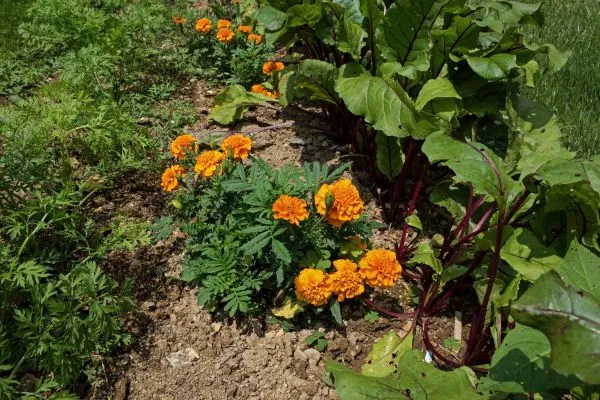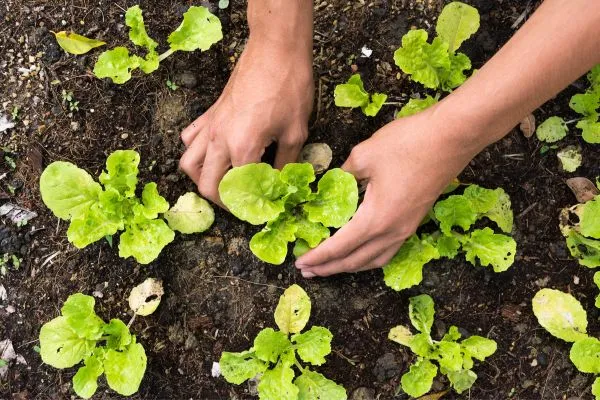In the world of gardening, one concept that has gained significant popularity is companion planting.
Companion planting is the practice of strategically planting different species of plants together to maximize their growth and health.
This ancient technique has been used for centuries by gardeners around the world, and it continues to be an effective method for enhancing the productivity of food plants.
In this article, we will explore the fascinating world of companion planting and discover how it can benefit your food plants. So grab your gardening gloves and let’s dive in!
The Basics of Companion Planting
Companion planting involves pairing plants that have mutually beneficial relationships. Certain plants possess natural characteristics that can assist or protect neighboring plants.
By carefully selecting the right combinations of plants, gardeners can create a harmonious environment where each plant thrives and supports the growth of others.
Understanding Plant Relationships
Plants interact with each other in various ways, and understanding these relationships is key to successful companion planting. Here are a few common types of plant relationships:
- Mutualism: This type of relationship is characterized by both plants benefiting from each other’s presence. For example, certain plants release substances that repel pests, which can protect nearby plants from infestations.
- Competition: Some plants compete for resources such as sunlight, water, and nutrients. It’s important to choose plant combinations that don’t hinder each other’s growth by competing excessively.
- Trap Cropping: Certain plants act as “traps” for pests, diverting their attention away from the main crop. By strategically placing trap crops, gardeners can protect their food plants from damage.
- Nitrogen Fixation: Certain plants, such as legumes, have the ability to fix atmospheric nitrogen into a form that is readily available to other plants. Planting nitrogen-fixing plants alongside crops that require high nitrogen levels can enhance their growth.
By understanding these relationships, you can create a harmonious garden ecosystem that fosters the health and productivity of your food plants.
Selecting the Right Companion Plants
Choosing the right companion plants is crucial for the success of your garden. When selecting companions for your food plants, consider the following factors:
1. Plant Compatibility
Not all plants make good companions. Some plants have antagonistic relationships and can hinder each other’s growth. For example, planting onions near beans can stunt the growth of both plants.
On the other hand, certain plants, such as marigolds, are known for their ability to repel pests and can be beneficial companions for a wide range of food plants.
2. Pest Control
One of the major benefits of companion planting is natural pest control. Certain plants, when grown together, can repel pests or attract beneficial insects that prey on pests.
For example, planting basil near tomatoes can repel tomato hornworms, while attracting bees for pollination.
3. Soil Enhancement
Different plants have different nutrient requirements. Some plants, such as beans and peas, have the ability to fix nitrogen in the soil, improving its fertility.
By planting nitrogen-fixing plants alongside crops that require high nitrogen levels, you can enhance the soil quality and promote the healthy growth of your food plants.
4. Space Optimization
Companion planting can also help maximize the use of limited space. For instance, planting tall plants, like corn, alongside vining plants, such as cucumbers, can provide natural support for the climbers, saving valuable garden space.
Common Companion Planting Combinations
Now that you understand the principles of companion planting, let’s explore some popular and effective plant combinations:

1. Three Sisters: Corn, Beans, and Squash
The “Three Sisters” is a classic Native American companion planting combination. Corn provides a natural trellis for beans to climb, while the beans fix nitrogen in the soil, benefiting the corn.
Squash, with its large leaves, shades the ground and helps suppress weeds, creating a symbiotic relationship with both corn and beans.
2. Tomatoes and Basil
Tomatoes and basil make excellent companions. Basil repels pests like aphids, whiteflies, and tomato hornworms, which can damage tomatoes.
Additionally, the aroma of basil is believed to improve the flavor of tomatoes when grown together.
3. Carrots and Onions
Planting carrots and onions together is a classic example of companion planting. Onions repel carrot flies, which can damage carrot roots.
In return, carrots provide a natural shade for the onions, preventing weed growth and conserving soil moisture.
4. Cucumbers and Radishes
Cucumbers and radishes are compatible companions that benefit each other. Radishes repel cucumber beetles, which can harm cucumber plants. Meanwhile, cucumbers provide shade for radishes, preventing them from bolting too quickly.
5. Marigolds and Everything
Marigolds are often referred to as the “companion planting superstars” because of their numerous benefits. Their strong scent repels a wide range of pests, including aphids, nematodes, and whiteflies.
Marigolds also attract beneficial insects like ladybugs, which feed on garden pests. Consider planting marigolds throughout your garden to enhance the health and productivity of your food plants.
FAQs about Companion Planting: Enhancing Your Food Plants
1. What are the advantages of companion planting? Companion planting offers several advantages, including natural pest control, improved pollination, enhanced soil fertility, efficient space utilization, and increased biodiversity in the garden.
2. Can companion planting completely eliminate the need for pesticides? While companion planting can significantly reduce the need for pesticides, it may not eliminate it entirely. It’s important to monitor your garden regularly and take appropriate action if pest populations become overwhelming.
3. Are there any plants that should not be planted together? Yes, some plants have antagonistic relationships and can hinder each other’s growth. For example, planting tomatoes near potatoes can increase the risk of potato blight. It’s important to research and choose plant combinations carefully.
4. Can companion planting be used in container gardening? Absolutely! Companion planting techniques can be applied to container gardening as well. Just ensure that the plants you select have similar growth requirements and won’t overcrowd the container.
5. Is companion planting only beneficial for food plants? No, companion planting can benefit all types of plants, including flowers, herbs, and ornamentals. By creating a diverse and balanced garden ecosystem, you can promote the overall health and well-being of all your plants.
6. How do I get started with companion planting? To get started, research plant combinations that work well together and suit your specific gardening needs.
Consider factors such as plant compatibility, pest control, soil enhancement, and space optimization.
Experiment with different combinations and observe the results to find the best companions for your food plants.
Conclusion
Companion planting is a time-tested gardening technique that can significantly enhance the growth and productivity of your food plants.
By strategically pairing compatible plants, you can naturally control pests, improve soil fertility, and optimize space utilization in your garden.
Whether you’re an experienced gardener or just starting out, exploring the world of companion planting can unlock a whole new realm of possibilities for your garden.
So grab your shovel, embrace the power of plant relationships, and watch your food plants thrive like never before!
